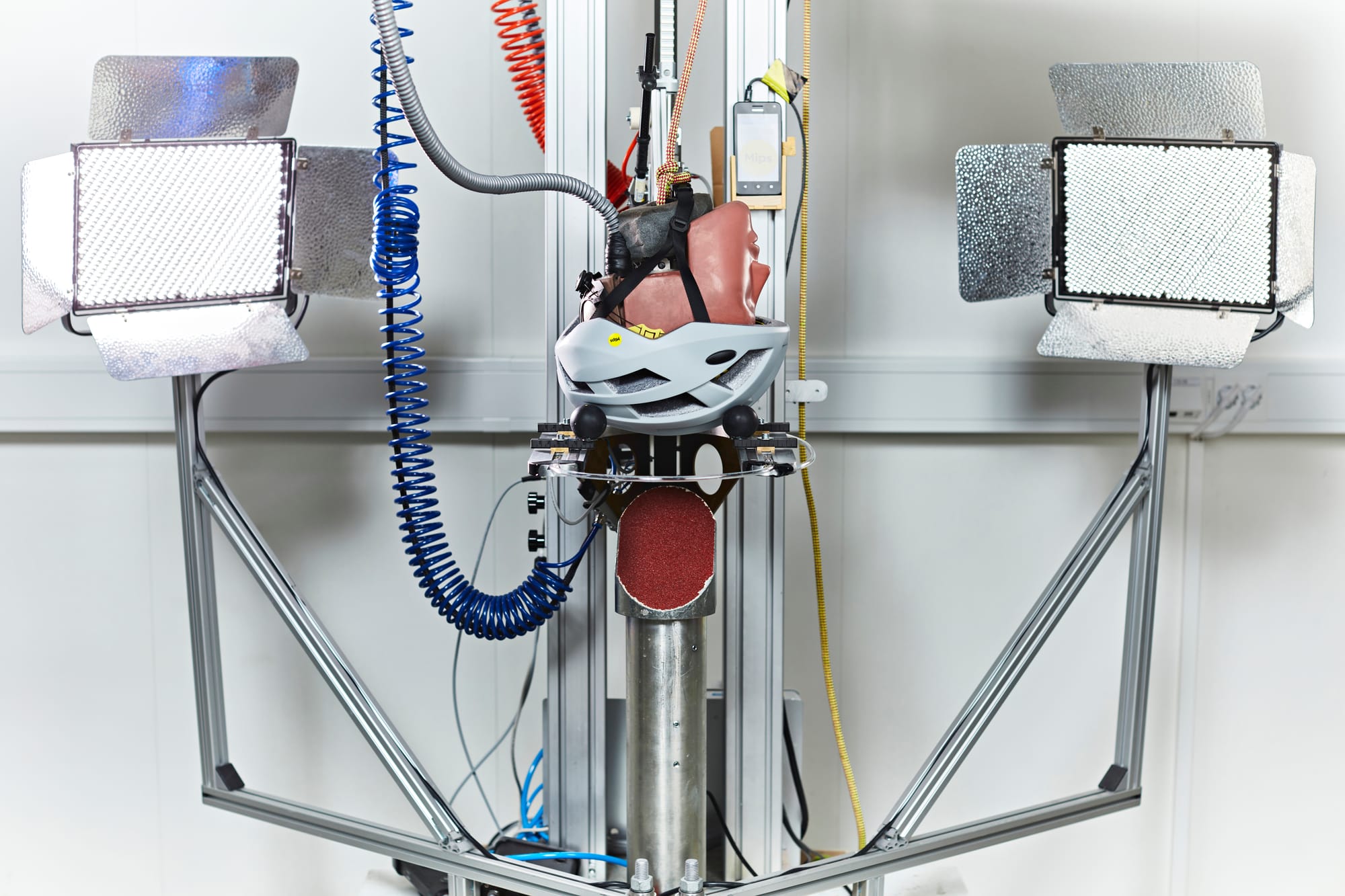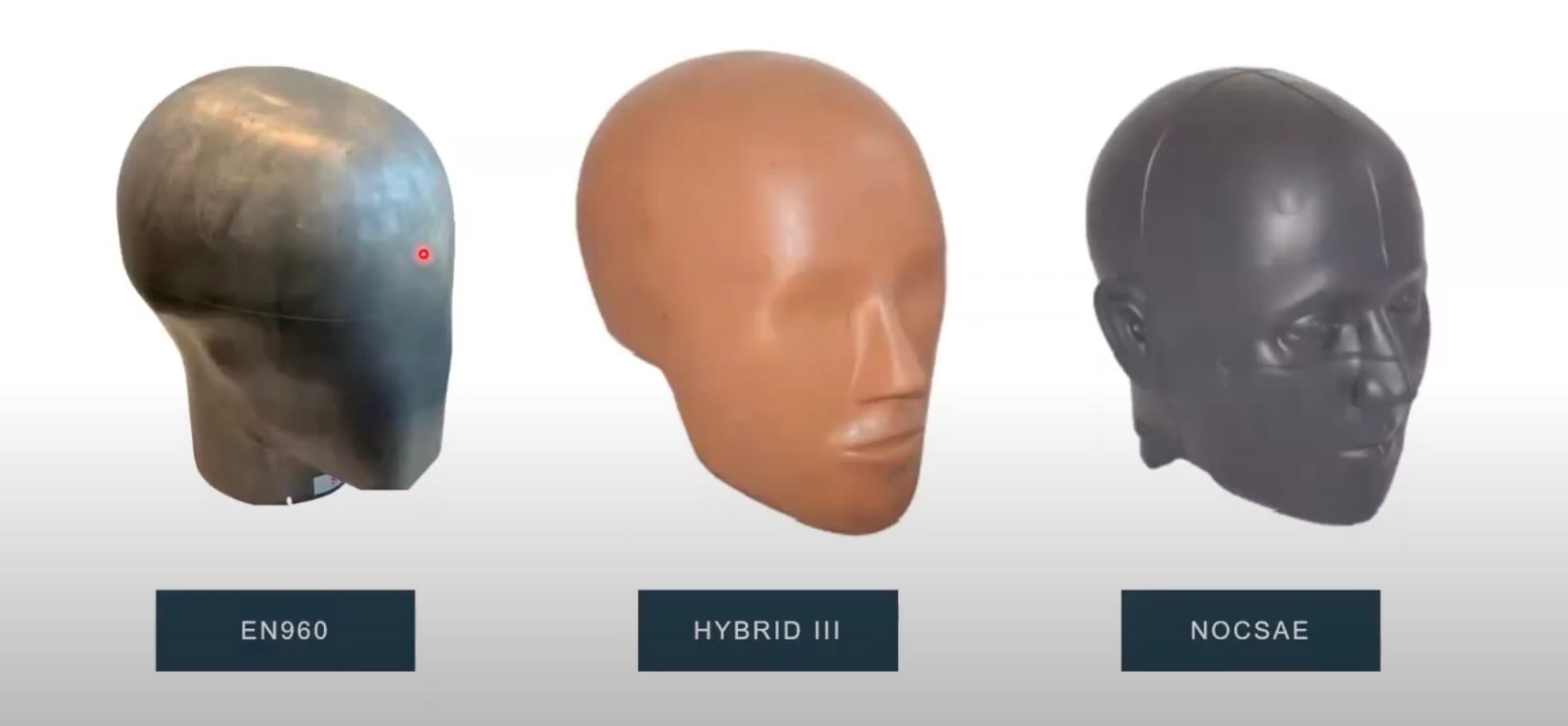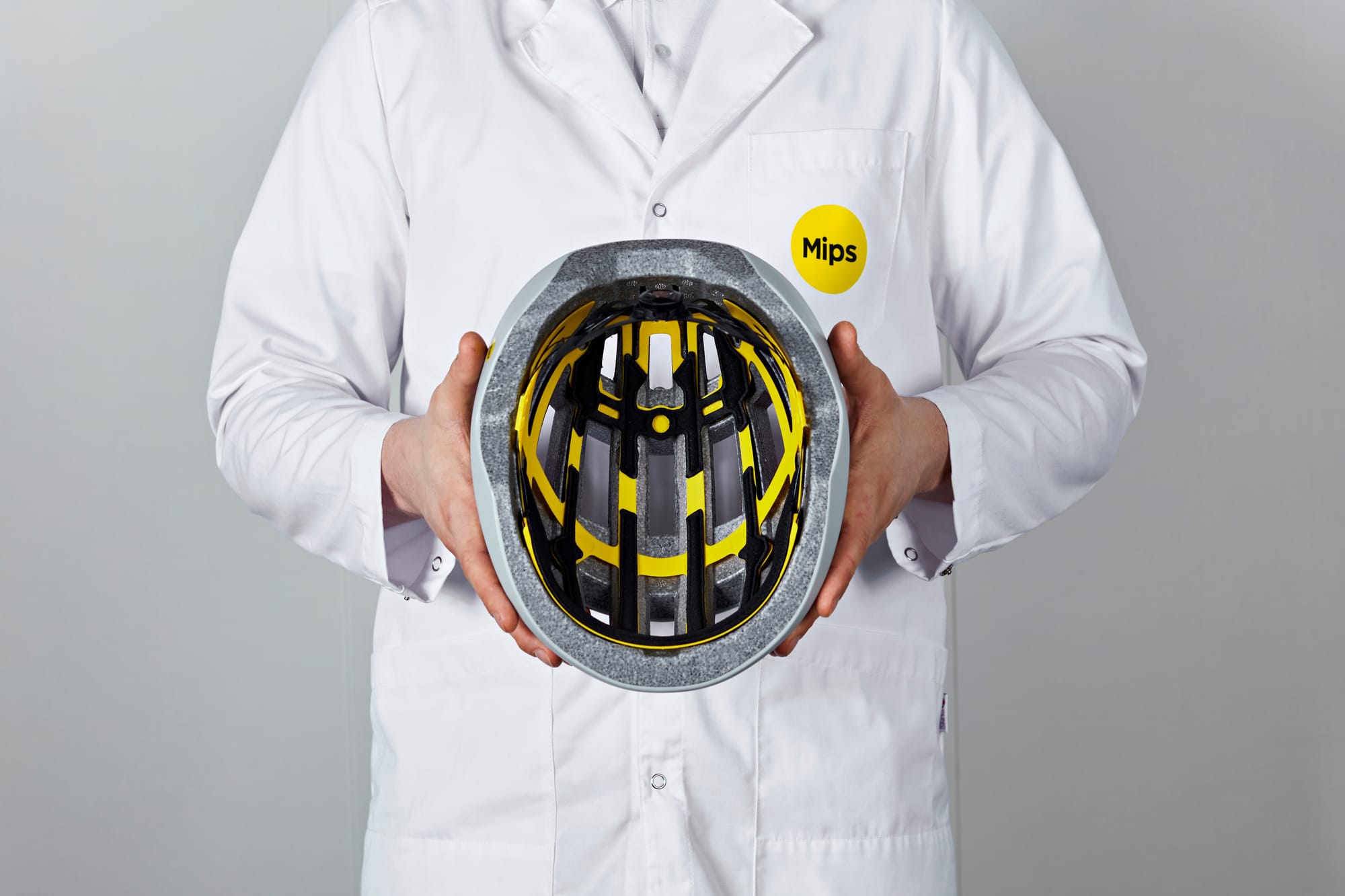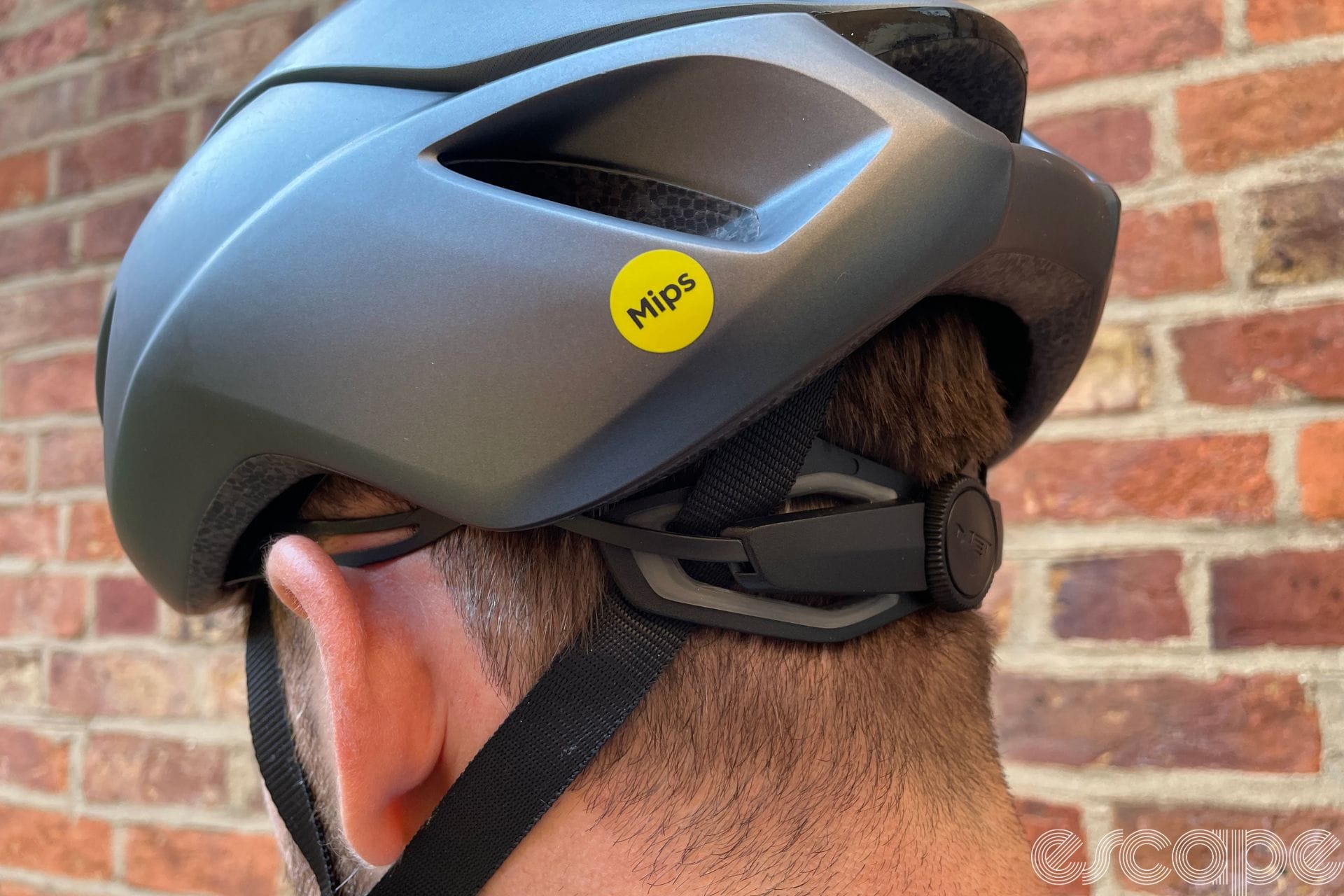Ever since the first bicycle helmet with Mips protection debuted 15 years ago, the role of rotational energy in head injuries has been a major focus in helmet safety. Now, a major advance in helmet testing will set the grounds for potentially the most substantive changes in decades to how helmets are designed and tested.
The headline update for the new EN 17950 standard – which is slated to replace the existing EN 1078 standard most recently updated in 2012 – is that rotational impact testing will now be mandatory. Although it does not have an in-force date yet, when it does, any bicycle helmet sold in Europe will have to meet its requirements for certification. It will also mark the first time that any regulatory testing standard in the world will include a rotational impact component in addition to the longstanding linear impact standards.
That change is a step towards better real-world accident simulation, as most impacts occur at an angle, rather than straight on. The brain is sensitive to rotational impact energy, which can lead to traumatic brain injuries like concussions and diffuse axonal injury. But as with all regulatory testing standards, EN 1078 primarily focuses on linear impacts and does not fully address the risks associated with rotational forces. Its most recent update, in 2012, encouraged manufacturers to consider rotational forces when designing helmets but did not incorporate this into the standard.

Secondly, the cycling landscape has changed an awful lot since that last EN 1078 update, both in terms of the kinds of terrain found in riding today, as well as the busier environment for urban and road riding. Riding in metropolitan areas in particular is inherently dangerous simply because of the number of vehicles in any given area. And if you also consider that EN 1078 covers helmets for use in general commuting through to gravel and mountain biking, the terrain being ridden in many instances has become significantly more challenging and potentially dangerous.
These considerations have not gone unnoticed, thus the overhauled European Committee for Standardization (CEN) certification for cycling helmets.
New head forms for rotational impact testing
Beyond the inclusion of oblique impact testing, the new standard also specifies the use of updated headforms. These new headforms have been developed based on collected real-world human data, to improve what is called biofidelity, or how closely the headform mimics what happens to a human head in an impact (especially rotational). The size range has increased from eight to nine to better represent the spectrum of human head size, and the new headforms are said to have a more lifelike shape, mass, and coefficient of friction.

Where things will undoubtedly get confusing for consumers (no thanks to Kask and Rudy Project) is that the new headforms have been developed by EU Working Group 11 or, to give it its shorthand name, WG11. Although it shares a name with Kask's own testing protocol, that is where the commonalities end. Given that the EU WG11 is going to get a lot more press with this new testing standard, Kask's choice of an identical moniker means confusion is almost certain, something for which it has been criticised in the past (including by colleagues in the CyclingTips days).

These new headforms are a pivotal component of the new standard, but whether they settle a longstanding debate over which model has superior biofidelity remains to be seen.
When considering how a headform behaves specifically in relation to a rotational impact, its surface friction is a crucial factor. The new headforms must have a coefficient of friction of 0.3, as this was decided by the EU WG11 to be most representative of heads with and without hair. Additionally, the headforms' inertia properties, which are a measure of how resistant the headform is to rotating around different axes, are specified based on human data.

All of this aims to more closely align testing of helmet safety performance with real-world scenarios. The closer that process can mimic its real-world use case, the more appropriate the certification becomes, which in turn makes helmets more appropriate for protection in their intended use.
What comes next?
Before EN 17950 comes into force as the test method for helmets, manufacturers will need to know how to implement it into product standards for helmets. This will involve defining the tests' specified impact velocity, impact location, and agreeing upon the pass/fail thresholds.
Although change is coming, the exact timeline for the implementation process is unclear, and it will vary across different regulatory bodies and geographic regions. Madelen Fahlstedt, a member of the EU WG 11 who presented the new standard said, “The test standard for ASTM is ready but the discussion within the different task groups for different helmet segments has just been initiated.”
ASTM (American Society for Testing and Materials) certification is the same as CPSC (Consumer Product Safety Commission) in the test parameters however ASTM certification is voluntary and doesn't require third-party verification. Once this test method is adopted by ASTM it will then need to be adopted by CPSC for it to become a legal testing requirement in the US.
Once the product standards have been agreed upon, the next step will be giving helmet manufacturers time to develop compliant helmets. When the standard is approved for use a two-step grace period is likely to come into action. The first period will outline how long non-compliant helmets can be produced. Then, the second period will define how long helmets that do not conform to the new standard can be sold.
How does EN 17950 differ from Virginia Tech?
On the surface, Virginia Tech's helmet testing is similar to the EN 17950 standard in its test method as it takes into account rotational impact. But two key areas where Virginia Tech testing differs are the current headforms it uses (NOCSAE) and how it presents its results. Virginia Tech provides a star rating and a numerical score that ranks helmet safety performance both on a standardized scale and relative to other models. As a testing standard, EN 17950 is simply a pass/fail test with all compliant helmets receiving the same certification regardless of how far they exceed the required thresholds.
Is EN 17950 going to influence US helmet standards?
The testing methodology, head forms and standardised thresholds of EN 17950 can be transferred into ASTM (the US equivalent to CEN in Europe). Fahlstedt explained that the ASTM-specific test method is ready, but its implementation is still being discussed with no hard timeline agreed upon yet. The introduction of EN17950 could make it more cost-effective for helmet manufacturers to develop a helmet that complies with the strictest standard and make this available across global markets than to offer specific designs based on individual market standards.
Questions over potential conflicts of interest
It is worth pointing out that presenting the new standard was Max Stanwitz, the CEO of Mips, and Fahlstedt, a biomechanical specialist for the brand. Fahlstedt holds a PhD in biomechanics and has been working within the field of biomechanics focusing on helmet safety for more than 15 years. She is also a nominated expert in CEN/TC158, a technical committee focusing on head protection and is a panel member of EU WG 11.

Given that Mips is a third-party system, it does raise a potential conflict of interest that members of Mips are so heavily involved in the development of the new standard. This move to include rotational impact testing will likely result in many helmet manufacturers turning to Mips – already the biggest player in the space – as an easy solution to increase the ability of a helmet in this respect.
Are helmets about to get safer?
There are still things to be agreed upon that make this a hard question to answer. Once the pass/fail thresholds have been set, this will give a clearer idea of what this means for helmets.
But whatever the thresholds, with the inclusion of rotational impact testing, a number of affordable helmets that currently lack a rotational impact management system are likely to be forced to improve to meet the requirements.
For helmets at the upper end of the spectrum and those that use Mips, Wavecel or comply with Kask’s unofficial and proprietary "WG11" testing protocol, the introduction of EN 17950 might not require change. These helmets are already being tested by both the manufacturer and independent testing facilities like Virginia Tech for rotational impacts and many of them score highly.
In this respect, unless the rotational impact testing pass threshold is placed significantly higher than brands are testing to, many premium helmets are likely to already comply with the new standard. EN 17950's biggest effect may be to better align helmet testing with real-world impact scenarios
What this means is that the performance you will get from any EN 17950-certified helmet is likely to be more representative of what happens when riders actually crash. Given how much is understood now about rotational impacts, the effects these can have on the brain, and the longer-term consequences of brain injuries like concussion, the move to standardise helmet testing to include this element is arguably a good thing for consumers.
Did we do a good job with this story?


